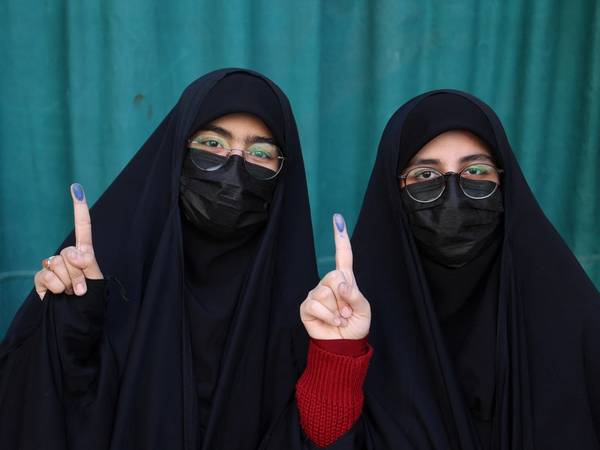In response to an unprecedented surge in currency and gold markets in Iran, security agencies clamped down on exchange bureaus, ordering them not post currency rates on Saturday.
Major exchange dealers have even shut down their price announcement boards, according to reports received by Iran International.
Following the parliamentary elections in Iran, the currency and gold markets witnessed historic highs, with the US dollar reaching the 600,000 rial mark at one point during Saturday. Sources in the Tehran market and currency information websites reported that the dollar reached 602,000 rials in the early hours of Saturday trading, marking a three percent increase from Thursday's closing rates.
The dollar's doubling against the rial since March 2022, coupled with failed nuclear negotiations with the US and its European allies, has contributed to this economic turmoil. On Saturday, the euro was traded at 656,000 rials and the British pound at 764,000 rials in the free market, indicating increases of over three and 2.5 percent, respectively, compared to Thursday's rates.
Moreover, the price of 18-carat gold surged to around thirty million rials per gram, reflecting a 3.5 percent increase from the previous week.
Observers and experts had anticipated further economic complications following the parliamentary elections, which amid voter apathy and lack of competition, propelled hardliners to gain absolute majority in the legislature.
The continuous devaluation of the rial, particularly since the US withdrawal from the JCPOA nuclear deal in 2018, has fueled inflation and plunged millions into poverty. The economic crisis has eroded the government's legitimacy, with a historic low voter turnout in the March 1 elections.
Meanwhile, according to Iran’s Statistical Center, the prices of canned tuna and red meat in February increased by 133% and 100%, respectively, compared to the same period last year.
In a report published on Saturday, Etemad daily analyzed the data provided by Iran’s Statistical Centre on the state of the food market. Entitled “The Three-Digit Inflation of the Proteins,” the report reviewed the average prices of 53 selected food items in urban areas.
Of these, 48 items have increased in price over the past 12 months. Some of these items recorded a three-digit annual inflation rate, with canned tuna at the top of the list with a 133% price increase.
Next in line is red meat which has an annual inflation rate of about 100%. The price of one kilogram of lamb meat in February last year was 2,850,000 rials ($5.7), which increased to 5,360,000 rials ($10.72) in February 2024.
According to the report, the prices of chicken meat and salmon have also risen by 55% and 65%, respectively, in the same period.
Meanwhile, Eqtesad 24 daily reported that nearly one-third of Iranians struggle below poverty line. The report projected a concerning escalation in poverty rates, foreseeing that by the end of the current Iranian year [March 20], “the proportion of individuals below the poverty line could soar to 37 to 40 percent.”
The forecast attributes the surge to the combination of soaring inflation rates and stagnant wages, exacerbating the financial strain faced by many Iranians.
In January, Iran announced that the new base monthly salary would rise to approximately $200 with a 20-percent increase. However, the constant decline in the value of the rial now pegs it to around $160.
